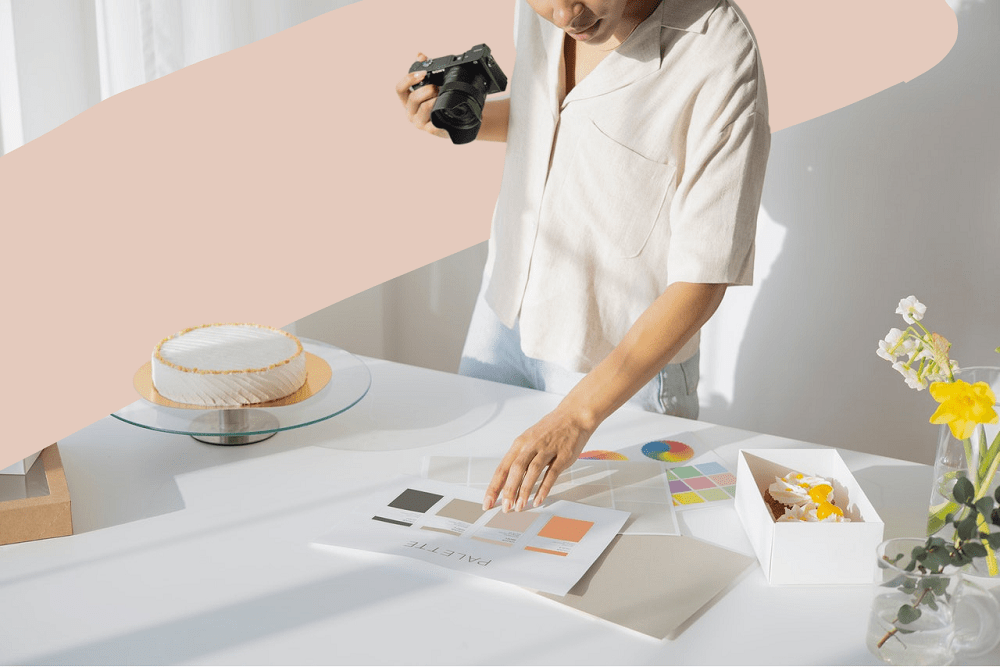We don’t need to tell you that a CV is a vital part of the job application process. It’s the first thing that an employer sees, and first impressions count.
This is especially true when you’re in a creative industry, with aesthetics and instant impact being so important to success within the field.
Let’s put it this way; creative types need to think outside the pages of an A4 piece of paper when it comes to designing their CV, especially if you want to stand out from the creative crowd. As the Guardian explains, “With the explosion of digital and creative industries over recent years, CV formats have become more and more imaginative”.
That said, creative CVs aren’t solely for artists and graphic designers. Those pursuing careers in sales, marketing, advertising and even PR can benefit from a creative, one-of-a-kind CV. If you want to design a creative job resume that sets you apart from other job seekers and lands you your dream job, here are some tips to help you along the way.
GET INSPIRATION FROM OTHERS
A creative CV can take the form of a humorous free-form story about yourself, a slideshow, poster, billboard, newspaper…the options are endless.
Why not follow the lead of graphic artist Miguel Rato, who decided to create a milk box CV when applying for jobs in advertising? Or, how about when designer Robby Leonardi created an interactive CV in the form of a Super Mario style game, featuring himself as a character who swims through a timeline of his work experience?
Marketing manager Nick Begley even used a CV chocolate bar to sell himself to potential employers. Maybe you, too, could create something edible like a cake…just make sure it’s delicious!
If that all sounds a little too out there, check out these creative CV examples for more inspiration.

IT’S ALL ABOUT THE COLOUR
Inventive colour schemes are another way to stand out when creating your CV, distinguishing you from the usual black and white, Times New Roman efforts that the majority of applicants will be sending in.
That said, some caution is advised; an excessively confident collection of colours may well interfere with ease of reading and perception of information. Use a resume editor, resume builder or ready-made templates for best results. As a rule, all the necessary parameters are already taken into account when deploying such templates, allowing you to focus fully on the important stuff; showing your creative flare to its full potential!
CONSIDER INFOGRAPHICS
If you’re looking to improve your chances of getting hired, an infographic gives you the opportunity to present your qualifications in a visually exciting and engaging way. The main advantages of infographics are brevity and concision, with the aesthetic accessibility of an infographic appealing to employers who value such attributes.
Place particular emphasis on timeline events and qualifications – you know, stuff that’s actually quantifiable and easy to capture in caption and picture form – rather than more intangible qualities, like generic ‘hard working’, ‘loyal’ and ‘perfectionist’ descriptors.
A coloured diagram with bright segments looks much more attractive than dry, lengthy text describing skills for a creative CV.

SHOW MORE WITH A VIDEO
A video resume is one of the most effective ways to set yourself apart from other candidates as well as be noticed by a job hunter or employer.
It all depends on your imagination and relevance here. In the presentation speech of your video, you can insert examples of your work and previous projects. Edit results into something succinct and accessible using screen recording software, avoiding making your video too long; snappy and to the point is always better when making that first impression count.
PERSONAL BRAND
It certainly won’t be viewed as superfluous or excessive, however, for you to highlight your own personal brand in your creative CV. In fact, many creatives in the industry have a unique writing style, design or even logo, designed to make them stand out and be easily identifiable from the off.
When building a personal brand, the first thing to remember is that your reputation and image are your key attributes, and should be applied to your social media channels, personal website and blog, if you have one, to reinforce the optics of your carefully curated image. Today, retweets and minimal engagement simply won’t do; you should be reinforcing and doubling down on your personal brand at every turn.
LINK TO SOCIAL MEDIA CHANNELS
These days, creative applicants don’t include all of their work in a printed portfolio or in their CV. Instead, it’s become common for the CV (offered in digital form) to include links to online writing portfolios, personal websites, your Twitter handle and Instagram account, which employers can access for a more well-rounded view of your attributes.
Fill these accounts with all the content you’d like to be displayed, showcase previous projects, and demonstrate links, contacts and allies you’ve made within the industry. All of this will appeal to potential employers looking for a balanced, well-connected individual.
DON’T FORGET THE DETAILS
The purpose of a cover letter is to really sell yourself. It’s all too easy to focus on the visual components of a creative CV and skip the significant details. Don’t get caught out doing this. Sure, you’ll want to impress aesthetically, but you’ll look unserious or amateurish if you don’t back up these impactful visuals with cold, hard facts. Good luck with your job application, and if you don’t find what you’re looking for, how about a job working on IDEAL?





